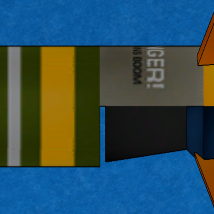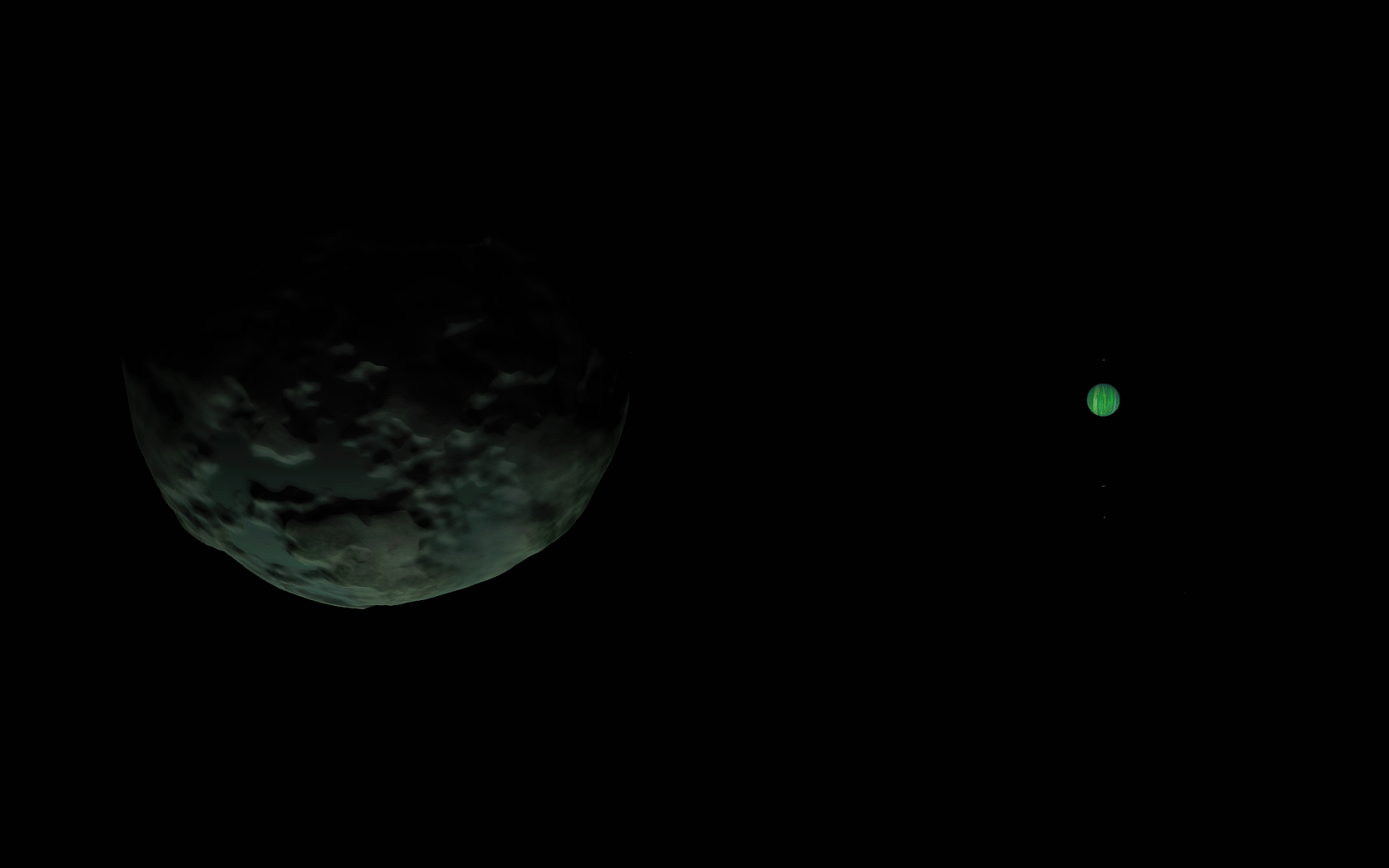|
Progeny Mk2 Launch Anomaly Investigation Update
After spending the beginning of the week continuing to analyze data from the Progeny Mk2 launch anomaly, the investigation came to a possible hypothesis about what initiated it. The next step of course was to test this hypothesis, which was done earlier today using the last Mk1-B booster. The theory was that the booster could ignite itself if enough compression was forced upon the engine bell and supporting frame, so we dropped it from 250m after it was lofted by a KerBalloon (the balloon was expended in the operation). Sure enough, when the booster landed on the ground it took off by itself, spiraling wildly through the air thanks to a damaged and ruptured engine bell until it was destroyed by a package of K-4 that was attached to the booster and linked to launch control.

Closeup of engine staging gap
So what happened? Turns out the ignition wire that runs up the inside of the booster to the solid fuel doubles back on itself enough that, if the lower section of the booster is crumpled slightly by a hard enough impact, the wire will pinch and short itself out, firing off the engine. How did this happen in the Mk2? A structural failure of the engine shroud. Looking at the image to the left, you can see the gap between the first and second stage boosters. The engine shroud connects the two, the boosters themselves are not connected. The build-up of pressure at launch eventually caused the shroud to fail and the upper stage to fall back and impact the lower stage. Ignition of the upper stage may not have been immediate (we can’t tell via video when the shroud failed) but if not then eventually it was compressed enough after being weakened by the initial impact to short the wire and ignite.
The team still has more research and testing to do next week with the structural materials in question, but since today’s test went as expected they feel confident in their theory. Simon and his team of design engineers are already contemplating various solutions to the issue and USI has been kept in the loop throughout the process, they are standing by ready to make any changes deemed necessary.
Here is the full test video:
Progress Continues on Civvie Prototype
It seems troubles are fading into the past now at C7 as work continued to pick up throughout this week on the Civvie prototype. As reported last week, the overwing design was chosen and implemented this week. The entire airframe, including the engine, has now been completed and for at least the next week engineers will be crawling all over and through it to make sure everything turned out according to specifications. Once this checkout is complete, the finishing touches will be added including cockpit instrumentation (the design of which test pilots Val and Jeb signed off on this week), navigation lighting, landing gear and a recovery parachute to be used in the event that landing is impossible or the aircraft suffers a malfunction/failure while in flight. C7 expects it to begin ground trials before the end of the month, hopefully flight trials as well.
Asteroid Tracking Network & KSA Finance Reports Released for October
You can have a look at how the KSA spent its money this past month in our monthly finance report compiled by Mortimer. A new field added to the top keeps track of our total net income, which is nice to see during months were we don’t make any money yet manage to stay ahead in the grand scheme of things – like October. Certainly the failure of the Mk2 hurt us financially, and not just in the loss of valuable payload instruments and other recoverable parts. We had several contracts lined up that could have made use of the Mk2, and we had the parts to pull off another flight within the month. Thankfully though we didn’t make the situation worse by signing any of those contracts prior to the Mk2 failure.
Also released this week was the monthly report from the ATN, the first report actually – congratulations to them on officially going into full operation this past month! The initial results of their efforts has certainly proven that this is an endeavor we should be dedicating resources to. In addition to the one NKO discovered to be on an impact course with Kerbin, 13 other NKOs have also been discovered, making them the majority of asteroids discovered so far by a significant margin. If this trend continues it would mean we are flying mostly blind through a dense field of space rocks, some of which hold the potential to once again attempt to end life on this planet. We’ll be keeping close tabs on things over at the ATN and share any announcements and data.
Celestial Snapshot of the Week
There wasn’t really any competition this week, the heavens are not offering up much of note lately. The single photo Val took however is more than enough, showing how the mighty Jool compares to the meeny Minmus when they passed just 0.2 degrees from each other at appulse. Jool is 100x the size of Minmus and at the time of the photo it was 1,464x farther away.
From the Desk of Drew Kerman
Out of Character Behind the Scenes stuffWritten on 9/26/16
Still waiting for 1.2 to land, which is one of the main reasons I’m stalling for the flight of the Civvie, since the trike landing gear in 1.1.3 just don’t work at all. I could just stop and wait, but I don’t want to stop and I also want to build up a 3-month lead time. I’m closing in on the halfway point, the Mk2 failure will help calm things down enough to make the days move quicker with less work for me. That wasn’t the real intent, the Mk2 failure was an overall pacing thing, but it does work to help get my lead time up. Eventually I can just do one day’s work per day and go back to focusing on other things – like Deus Ex: Mankind Divided 😛 I’ve also been thinking off and on lately how I might want to implement something similar to DSN Now, since I plan to do a more ground-based comm network with this version of the KSA rather than launching lots of dedicated communications satellites.
I think I’ll also cover creating images like the one I posted for celestial snapshot of the week. I use CameraTools to zoom in from the ground, and Distant Object Enhancement points me to the planets, the flares disappear once you zoom in close enough and you can use it to black out the skybox. Once I’m zoomed in I take the screenshot, and then head into Map view, where I take another screenshot of the planet itself to get the proper lighting and texturing that isn’t shown with the default zoomed-in photo. I simply use that for the proper apparent size of the object, which I then match with the planet image I took from the map view. Sarnus is the furthest planet I can see with this method. For Urlum and Neidon I will need one of the telescope mods.
Finally, here’s a look at an alternate booster test – I ran several before finding the one I liked. This one is definitely more spectacular in its result however I didn’t like how the booster got stuck in the ground (fell through the KSC surface) for a bit before taking off again. Enjoy!








